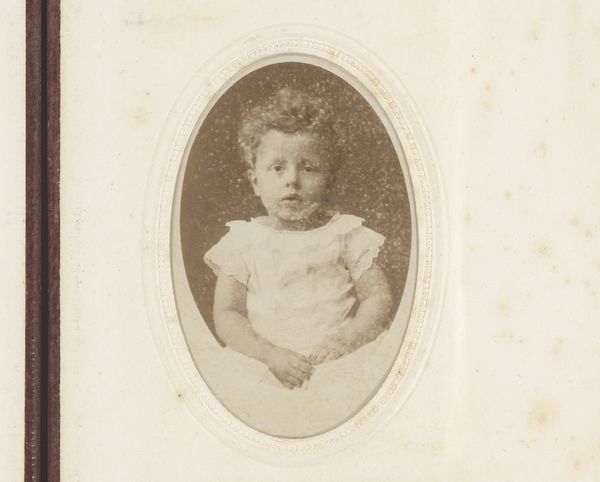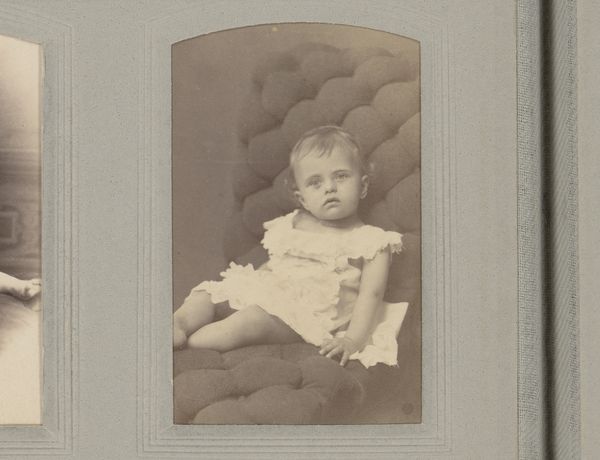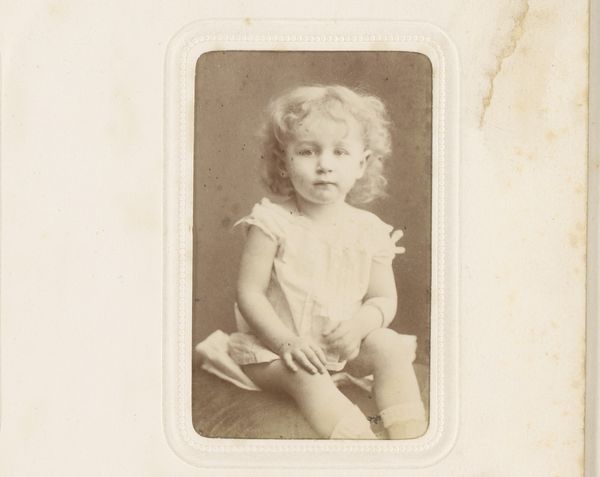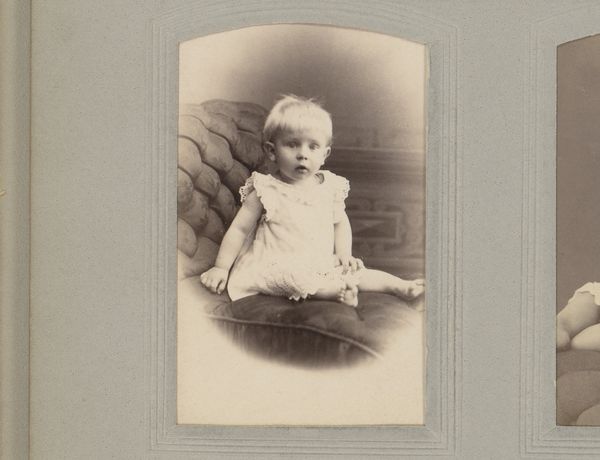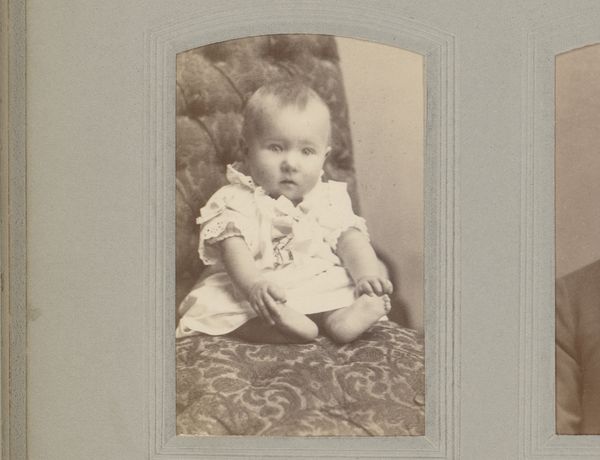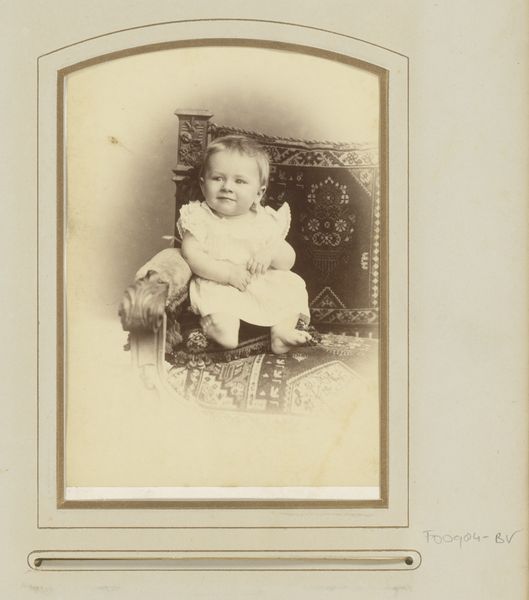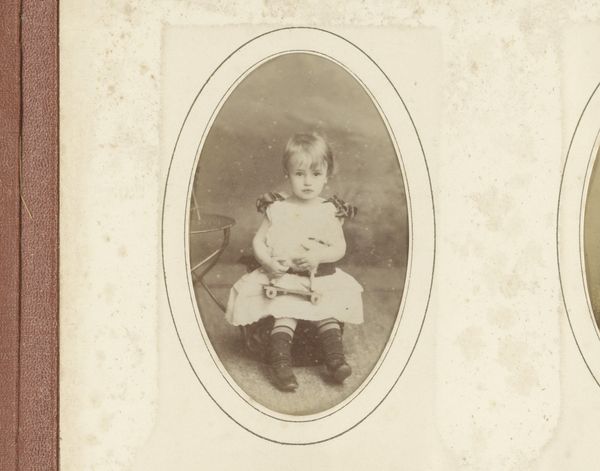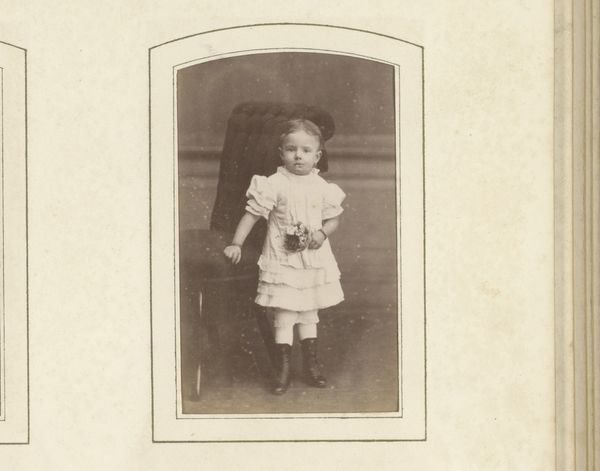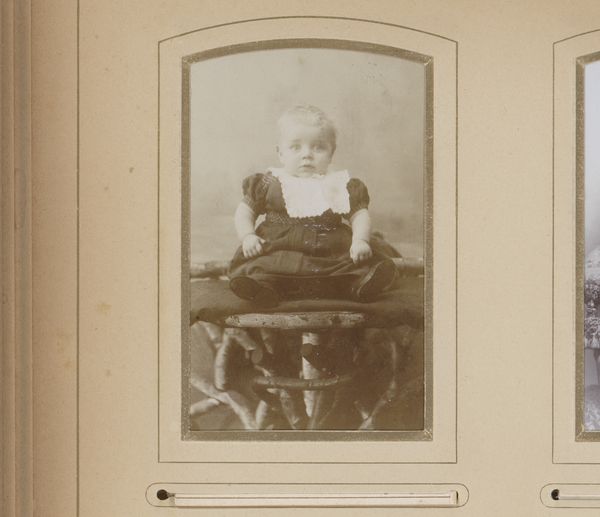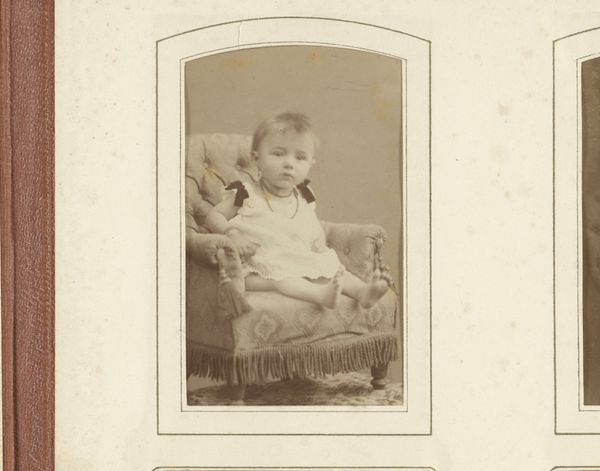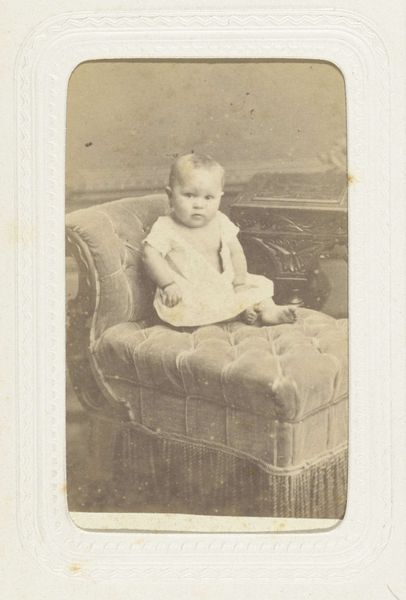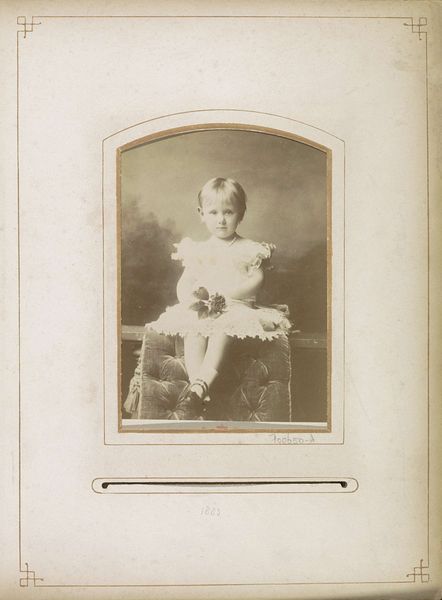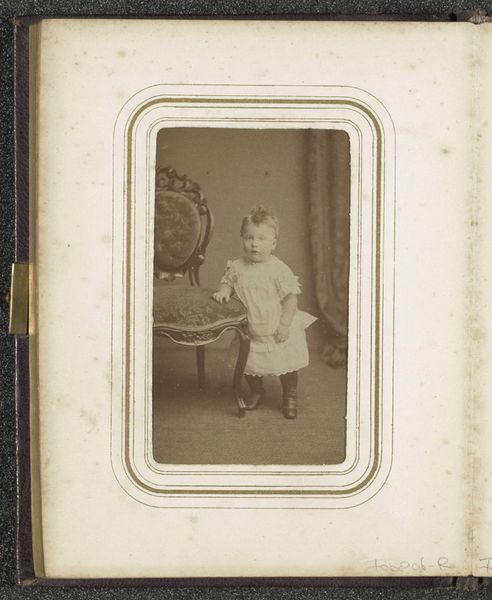
photography
#
portrait
#
photography
#
child
#
19th century
#
realism
Dimensions: height 83 mm, width 50 mm
Copyright: Rijks Museum: Open Domain
Curator: This is an intriguing early photograph attributed to L. Muller & Rault, entitled "Portret van een kind," dating to around 1860-1900. Editor: My initial feeling is that the photograph exudes vulnerability. The child's stare and the way they're perched on the chair seems quite fragile, despite the formal presentation. Curator: Well, let’s consider the photographic process itself. Given the period, this would likely have been a wet plate collodion process. This necessitated specific equipment and expertise, which means this portrait wasn't just a casual snapshot, but a considered construction, indicative of a certain level of societal access and, indeed, consumption of photographic services. Editor: Indeed. That solemnity you mentioned seems echoed in the imagery as well. Childhood innocence rendered in this style, against the backdrop of what appears to be velvet drapery – what does it tell us about how they perceived children during that era? Children are symbols of purity and new beginnings. Do we get the sense that's being exploited somehow? Curator: The backdrop is crucial to understanding the constructed nature of these photographs. Consider how many portraits used classical columns and velvet drapes to convey ideas about their subject. But this is a child; how does that expectation for the trappings of class apply? What type of material realities are created through that tension? Editor: I see your point. Perhaps this constructed backdrop hints at an attempt to elevate the child's status, aligning them with idealized images of that era. The dark tones, although potentially a limitation of the early photographic process, add an undeniable gravitas. There's a symbolism of aspiration and an attempt to immortalize youth...or perhaps make it old too soon. Curator: Precisely. This portrait gives rise to important questions of class, labour and materiality surrounding its production and use, and provides critical information as to who was afforded those opportunities and who wasn't, how social standing determined whose stories got told and, just as importantly, how that might inform today's story telling through photography. Editor: Ultimately, despite its staged formality, the child’s humanity pierces through. The image allows us to access a moment, suspended in time, inviting speculation about this child's life, aspirations, and place within the grand theatre of human history. Curator: Yes, even in its manufactured representation, we can start to unravel societal values, methods of artistic expression, and access to image making across material histories.
Comments
No comments
Be the first to comment and join the conversation on the ultimate creative platform.
